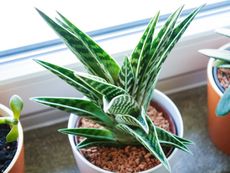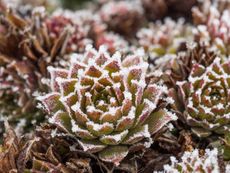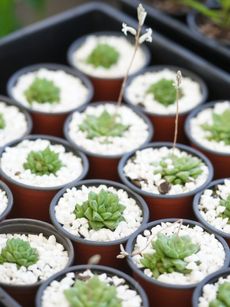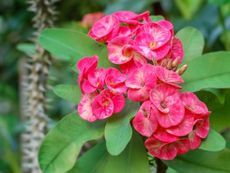Cactus Fungus Treatment – Learn About Fungal Lesions On Cactus

Fungal issues plague almost every form of plant. The sheer number of fungal organisms is staggering and most survive by being dormant for long periods of time. Fungal lesions on cacti may be caused by any number of fungal types, but the important things to note are what causes them to colonize and how to prevent their damage. In this way, the gardener is armed with knowledge on how to treat fungus on cacti should any disease symptoms develop. Some fungal diseases simply cause cosmetic damage while others can develop into rots that completely eat the cactus from the inside out.
Types of Fungal Damage in Cactus
The vast number of cacti species can only be outcompeted by the huge quantity of fungal varieties. Fungus spots on cactus pads are common, as in the case of Phyllosticta pad spot. It is often quite impossible to diagnose which fungal organism is causing the spots, but often that is unimportant since treatments are generally the same. A few fungus types damage the roots and eventually the whole plant, so once their visual damage is seen, it is too late for the plant. Simple topical fungal spots are much easier to combat and are usually not life-threatening to the cactus, provided steps are taken to control the offending fungus. Lesions on cacti may present in many different ways. They may be round, irregular, raised, flat, or any other shape. Many are discolored but, again, the tones can range from yellow to brown and all the way to black. Some are corky, while others are weepy. These may ooze brown, rusty, or black fluid, evidence of severe infection. The cacti most frequently plagued by fungal lesions are Opuntia and Agave. Fungal lesions on cacti usually start as water spots or slight discolorations on the plant's epidermis. Over time, as the fungi mature and spread, the symptoms can broaden and even eat into the cambium as the surface skin cracks and allows the pathogen to enter.
Causes of Fungal Lesions on Cactus
Outdoor cactus can come in contact with fungal spores in various ways. Spores may be blown in by the wind, soil, or contracted from splashing water. Plants with consistently wet pads or stems are the worst affected. Conditions, where rain or high humidity combine with warm temperatures, promote the formation of fungal lesions. Fungus spots on cactus pads are more prevalent in the springtime. They are also enhanced by overhead watering and in areas where humidity is high. Greenhouse specimens may be particularly susceptible unless there is adequate ventilation. Condensation adds to the ambient humidity and promotes spore growth. Soil is another contributing factor. Many soils harbor fungal spores, which can persist for years until the right set of conditions occurs. Even purchased potting soil may be contaminated with fungal spores.
How to Treat Fungus on Cactus
Once there is a fungus affecting your cactus, it can be difficult to stop. If the damage isn't severe, a fungicide spray can usually help. If the plant is rife with lesions, it may be best to find some uninfected healthy material and start a new plant with a cutting. Use a sterile knife to take the cutting and dust it with sulfur to kill any possible adhering spores. Controlling cultural conditions with plenty of heat, under stem watering, sterile potting medium, and ventilation will halt many fungal outbreaks. Another way to save a plant is to cut out the infected tissue. This doesn't work with all fungi, but it may be effective at times. Again, sterilize your cutting implement and remove more tissue than appears to be affected to ensure all the pathogen is removed. Keep the area dry as it calluses and watch carefully for signs of reinfection.
Gardening tips, videos, info and more delivered right to your inbox!
Sign up for the Gardening Know How newsletter today and receive a free download of our most popular eBook "How to Grow Delicious Tomatoes."

Bonnie Grant is a professional landscaper with a Certification in Urban Gardening. She has been gardening and writing for 15 years. A former professional chef, she has a passion for edible landscaping.
-
 Urban Composting Guide: How To Compost In The Middle Of The City
Urban Composting Guide: How To Compost In The Middle Of The CityUrban composting does not have to be daunting. You can compost in the city, and maybe even try some urban worm composting!
By Mary Ellen Ellis
-
 Shrub Diseases And Pests To Watch Out For
Shrub Diseases And Pests To Watch Out ForShrub diseases and pests can be challenging. Learn how to recognize and eradicate them before they can present a danger to your plants.
By Susan Albert
-
 Variegated Succulents To Add To Your Plant Collection
Variegated Succulents To Add To Your Plant CollectionRead about some of the pretty variegated species that add beauty and interest to your succulent collection.
By Becca Badgett
-
 How To Protect Succulents And Cacti From Rain
How To Protect Succulents And Cacti From RainRain has the potential to cause damage to our cacti and succulents. However, when planted in proper soil, rainfall may perform as just a deep watering. Read on for more.
By Becca Badgett
-
 Succulents and Frost: How To Save A Succulent From Frost Or Freeze
Succulents and Frost: How To Save A Succulent From Frost Or FreezeCan succulents withstand cold? Succulents and frost don't traditionally go together and can result in damage, but you may be able to save frozen succulents.
By Bonnie L. Grant
-
 Pink Succulents Varieties To Try: How To Grow Perfect Pink Succulent Plants
Pink Succulents Varieties To Try: How To Grow Perfect Pink Succulent PlantsPink succulents may display the color on leaf edges or with streaks or blotches mingled throughout the foliage. Here are our favorites.
By Becca Badgett
-
 10 No Fuss Cacti - What’s The Best Low Maintenance Cactus
10 No Fuss Cacti - What’s The Best Low Maintenance CactusIf you’re thinking of adding plants to your collection, consider no fuss cacti. Click here for an easy cacti list, even for beginners.
By Becca Badgett
-
 5 Best Succulents For A Bathroom
5 Best Succulents For A BathroomSome succulents can be great options for bathroom decoration. Read on for our top five bathroom succulent ideas.
By Becca Badgett
-
 What Is A Succulent Starter Kit - Best Succulent Starter Kits
What Is A Succulent Starter Kit - Best Succulent Starter KitsWhile garden kits are not the most inexpensive option for growing succulents, they do include everything you’ll need. Grow succulents from seed by using a succulent seed starter kit to learn the process and to check your results.
By Becca Badgett
-
 Dazzling Succulents - Succulents With Striking Flowers
Dazzling Succulents - Succulents With Striking FlowersWhen you think of succulents you may just envision their unique leaves and stems. But succulents also produce bright and bold flowers in the right conditions. Read on to learn more.
By Bonnie L. Grant